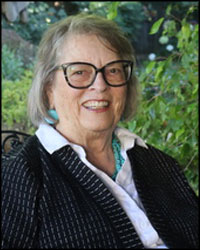« President Obama & Women: Remarkable Achievements | Neglecting my blog– »
Travels in Italy…
April 22
The Tryannean Sea rushes inward through this ancient town of Fiumicino so fiercely that the confluence of the river and sea is nowhere in sight. Enormous, rocking fishing boats with towering masts line the river on either side. An arched pedestrian drawbridge straddles the river at the waterfront where handsome men and women dressed in leather jackets and boots—more Sicilian than Roman—sit in sidewalk bars smoking and drinking expresso. Too early for the restaurants to open, we walk by open fish markets and cafes and settle into a table near the water, ordering Prosecco and Panini, and watching a well-dressed couple making love at the adjoining table. He, a suave middle-aged man, she an attractive and much younger woman. We enjoyed speculating about their “torrid affair,” and playfully wondered if anyone in the audience was speculating about ours.
We’d been traveling a day and a half without sleep, so we return to our hotel, take a shower and fall into bed. We have managed to stay awake until 7:30 p.m., thinking that surely we can sleep the night. It is now 2:00 am. When it’s light enough to find coffee, we’ll take off for Pompeii in our rented Ford Fiesta.
It is now 6am and we’re getting our bags ready to load the car after enjoying a
Buffet breakfast. Pompeii and the Amalfi coast beckon us!
April 23
Forecast: three days of cold and rain. Reality: three days of beautiful weather. When we woke up Sunday morning (sans Meet the Press and the NY Times), we debated whether to tackle the harrowing drive down the Amalfi coast to Positano.By the time we arrived in Sorrento, however, the fog was lifting from the dramatic cliffs and we continued to drive to one of the most beautiful places on earth.
We nominated other contenders: Big Sur and Sea Ranch; the Dalmatian Coast of Yugoslavia; parts of Hawaii; Ronda, Spain; coast of British Columbia—you may add to our list. What makes a place beautiful? Positano has the sea and sharp, rocky mountain cliffs, quaint architecture—much of it built into the mountains where the man-layered stones blend with natural stone; breathtaking views; history. Linda has decided that it is the most beautiful place on earth—Morgan likes to be more fair-minded. John Steinbeck captured it well: “Positano bites deep. It is a dream place that isn’t quite real when you are there and becomes beckoning real after you have done.”
From Positano, we ventured along the breathtaking cliffs of Sorrento before setting off for Naples (challenging driving!) and a late lunch, which we enjoyed at Nero’s. Wonderful house wines and pastas. The most striking images that remain of Naples are the giant working port and incredibly immense structures of all kinds: castles, government buildings and villas, walls…larger than could have been imagined. (Kosta, take noteJ) Naples was established by Rhodes.
This morning we were armed with what proved to be unnecessary raincoats and umbrellas for the trek through the ruins of Pompeii. Pompeii was established by the Etruscans (but, of course) some 2800 years ago, becoming an official Roman state in 20 BCE. You may charge us with talking in superlatives, but this is the most vast area of remains (hundreds of acres) that we have visited. A major earthquake in 62 AD did major destruction to the now-Roman city, but it was 79 AD when the “plug” and ash of Mt. Vesuvius blew 28 kilometers into the sky and rained down pumice rock and ash onto the city, burying it until the 1500’s. The dug out remains host many terme (baths), temple to Isis, Apollo, Zeus, Minerva, and a grand theatre with seating capacity of 5000. From a “Big History” point of view, this was the time of the writing of the gospels in Alexandria, the missionary zeal of Paul and the Christians in the Roman Empire. To what extent—and we expect a lot—did the gods fall from grace?
With the inimitable resilience of humans, present day Pompeians have rebuilt their city into an intriguing community of civic pride and spiritual presence with museums, the famous ruins, plazas and a grand cathedral. We are at the stylist Hotel Diana and are off to Vesuvius in the morning to see for ourselves. It is now raining.
April 26
We can now testify that Mt. Vesuvius is temporarily safe—no smoke or heat. However, that’s perhaps what the ancient Pompeians thought. From Vesuvius, we drove the five hours to Arezzo in pouring rain and stayed in the old quarter of this little-visited ancient city. (We got lost…once again… trying to find Montepulciano) We had to be satisfied with a humble suite in downtown Hotel Continentale. The disadvantage of traveling by car is that we get lost; the advantage of traveling by care is that we get lost.
Yesterday…on to nearby Il Pero for the beginning of a week of festivities. We no sooner move into our apartment in this 13th century stone estate and say hello to proprietors Baroness Miranda, Baron William Taxis, daughter Annie, and friend Mary Lane from Taos and Jane from Edwards, Colorado, than we are whisked off to a Festa party (April 25 is Festival Day all over Italy). Thirty Italians and the three Brits welcomed us to a feast under the trees that lasted for hours. The weather was scrumptious, the food delicious, and the singing nothing less than spectacular (the host Donato, an internist from Florence, brought a karaoke machine with three mics). We guests joined in on Elvis Presley and the Beatles. No Frank Sinatra in sight. Donato’s wife, Esmeralda, spread her homemade jewelry on the table that was quickly purchased by us American guests.
We’re off to three small nearby towns this morning with Mary Lane and Jane; other guests who will share our apartment arrive today. We hear that the book talk party on Saturday is now up to 45 people! Oh my. We’ll be back with another journal entry in three days or so.
April 29, 2012
Italian Journal—“the day after”….the book release party at Il Pero, Tuscany, for Etruscan Evenings. Our guests, brother Zane and sister-in-law Janet from St. Helena, Kristy and Julie from Denver; grandson Jered and friend Joe from Chico, Mary Lane from Taos, Jane from Colorado, Catherine and Kris from Santa Fe, Emily from Gualala—and 30 Italians invited by Baroness Miranda and Baron William Taxis and their two beautiful teenage daughters, Isabella and Annie. Two special friends, Cheryl and Emerson, came from their home in Fiesole; a family of five from Canada; and a couple of writers from England. In the Medieval hall lit only by dozens of candles, we enjoyed hors d’oeuvres, wines and conversation. Miranda surprised Linda by arranging for an introduction by Zane, lovely words about their childhood together, likening her kindly to their mother, both dreamers. Linda dedicated the evening to their mother, Lucretia, a key character in the novel. Generously, each of our guests from America read their favorite sections from Etruscan Evenings, lending multiple voices to the event.
We went out to breakfast this morning with Jered, Joe and Miranda and she told us stories of a nearby town burned by the Nazis in 1944, a town visited by Morgan and Bob Blackburn (whom Miranda describes as “unforgettable”) five years ago. We have two more days in this luscious country estate, then on to Rome and Florence. More later.
May 4, 2012
The journey into our “Roman Holiday” was an intriguing combination of travel through hilltop pastoral villages into one of the most complex and densely populated urban mazes we have ever experienced (sans Cairo).
Setting out for Rome from the Taxis estate in Tuscany, we decided to take a detour to Todi, the small village that two of our American fellow travelers had recommended highly. Leaving Highway #A1, we skirted a gorgeous lake and forest preserve and climbed up a hill to a plateau with a large parking lot. There we left the car, rode a lift up the incline to the heart of the delightful village of Todi. We highly recommend this village on your own journeys. (Other favorite Tuscan towns: San Gimignano, Chiusi, Volterra, and Cortona.)
“Todi’s history can be read in layers: the interior walls show Todi’s Etruscan and even Umbrian influence, the idle walls are an enduring example of Roman know-how, and the “new” medieval walls boast of Todi’s economic stability and prominence during the Middle Ages.” (Lonely Planet)
As we traveled on, approaching Roma, Linda opened the computer for instructions on how to traverse the complicated 36 turns to our hotel, Casa De Sara, in Piazza Navona. Morgan drove as Linda read instructions, turning left (“sinistre”) and then right (“destini”) at every block or two. Getting discouraged after a while, Linda called Antonio (who speaks almost no English) at the hotel for directions. Shocked to discover we were coming by car, he was of little help. So Morgan double parked outside the Piazza area and Linda disappeared for a half hour, eventually finding the hotel and returning to the car accompanied by two handsome Italian men. Morgan was instructed to surrender the keys to Antonio who quickly found a parking space in an alley near the hotel. Antonio introduced us to our hotel neighbors and told them how amazed he was that someone of antique age (his passport revealed that dark secret) could actually survive driving through such a maze! The austere room with a tiny balcony overlooks the labyrinth of alleys, teeming with shops, restaurants and people of all colors and dress.
We chose this area because several Roman scenes in Etruscan Evenings are set here or nearby (all of which we set out to find and enjoy once more, especially the Caravaggios in the Church of St. Louis). We are forever enchanted by the many faces of Navone. In the early morning, the alleys are filled with fruit, grocery and news stands, motorcycles, and locals enjoying expressos. By noon, the restaurants are filling up—replacing the street foods, the stands are transformed into stations for antiques, jewelry, hats, and luggage. Gelato, wine and pizza are omnipresent.
Ah, but it is the evening that is most magical: diners at tables line the alleys, any blemishes disappearing in the evening candle light, sounds of violins and saxophones float through the air, the chatter of voices in many languages…and nearby the magnificence of the Piazza itself, filled with artists and vendors, fountains, churches, restaurants.
The grandeur of Rome never disappoints. We walk, take public transport, and gratefully get lost in the Via Veneto, Pantheon (This place erected for many gods still has the great opening at the top from which our grandson, Jered, reported that he watched a feather make its way hundreds of feet down into the granite below), Coliseum, neighborhoods seen from the tour bus (a great way to get the overview once again), The Church of St. Maria sopra (meaning on top of) Minerva.
Tonight we have dinner with friends near the Trevi Fountain (as in Three Coins & La Dolce Vita). Off to Florence tomorrow.
May 7-Day in Fiesole
From our delightful Hotel Maxim near the Duomo here in Florence (Firenze), we set about by car for Fiesole to meet two individuals and give them copies of Etruscan Evenings (EE). After our classic experiences of getting lost, we eventually rose on the mountain road to perhaps the most glorious small town in the world—making it just in time for our 10:00 appointment with Marco De Marco, Director of the Etruscan Museo in Fiesole.
She crossed the main square and approached the Zone Archeologie of the Etruscan Museo…Her feet found station in deep emerald grasses and red poppies. Olive, cypress, pine, and mulberry trees surrounded the massive zone of Etruscan, Roman and Longobard ruins laid out horizonally next to each other. Justine turned to face the Etruscan Temple of Menrva…(EE).
Our visit with Marco, a major character in EE, was warm and welcoming. He was pleased to receive his copy of EE and excited about continuing finds about the mysterious Etruscans, which he assured Linda he would communicate to her. He gave us a copy of his newest book on the Etruscans.
After a walking tour of the Zone and town, and lunch at the Aurora Restaurant, we joined Patricia Soviano at the Villa San Michele, which began its glorious life as the monastery of St. Michael the Archangel in the 15th century. It seems only fitting that Michelangelo served as midwife, designing the imposing façade and loggia of stucco, crowned with lions’ heads. The hotel has been owned and operated by the Orient Express for the past 30 years. A brief aside: as Morgan and Linda waited for Patricia, enjoying cappuccino and refreshments in the loggia, we speculated on the cost of a room. Linda said $800. or more; Morgan said $400. As Patricia later took us on a walking tour of the grounds, we learned that the daily rate for an elegant garden room is $3500.
At 31, Patricia serves as Guest and Public Relations Director at the hotel. Like Marco, she had provided information and photographs for the novel; and like Marco she related childhood experiences that influenced her life. Patricia recalled wanting to be “boss” at the age of eight so she studied business in Paris, learned five languages and moved from Madrid to Italy. Marco lived near the Duomo at age two and can still hear the bells in his heart.
Last night, we went to a stunning opera performance at the Santa Monica church built in 1400, then walked back across the city. Today we retraced EE tracks to the Caravaggio room at the Uffizi, the world’s best chocolate at the Rivoire in the Piazza della Signoria, and the site of a romantic dinner at the exclusive Enoteca Pinchiorri. Tonight we will visit friends of Miranda and William Taxis in their home here in Florence and leave for the Rome airport in the morning.
More tomorrow night on the politics and elections this week in Europe. We thank you for being patient readers of our personal journal….
May 9, 2012
One of the advantages of traveling in Europe is access to more international news (in the north) through the International Herald Tribune. It has been fascinating to read about US and world news in the IHT with its mix of perspectives from NY Times favorites like Brooks, Krugman, Dowd, Friedman, as well as various global edition writers. Last weekend’s elections sharply drew the battle lines—already evident in the US—between austerity and growth stimulus, social spending and the role of governments. It was on display most dramatically with the defeat of Sarkozy and the election of socialist (with moderate tendencies) Hollande. Marine Le Pin—the far right equivalent of the Tea Party—received 18% (at least they’re not as strong as in Indiana). Angela Merkel has lost her most devoted ally and co-designer of the austerity demands–Sarkozy. Greece has been unable to form a government because of sharp divisions regarding the austerity demands. Putin may be back on top, but can no longer count on a rubber stamp Duma. It was interesting to note that one of the “long time personal friends” present at Putin’s “welcome back rally” was Italy’s Silvio Berlusconi (maybe eager to plan his own reincarnation?) Resentments are running high throughout Europe.
What changes have we observed in Italy in the last 5 years?
• More accommodations for the handicapped, including bathrooms. Therefore, more travelers in wheelchairs.
• We could no longer find BBC, CNN or Al Jazeera English at any hotel. (An austerity move to pay for fewer channels.)
• More women police
• Berlusconi is gone—meaning a more realistic view of austerity (Although that could be changing as Italy has elected local mayors in 1000 cities that (so far) have been overturning Berlusconi’s rule of local politics).
• Unemployment is at a 12-year high.
• An even sharper division between the prosperity north of Rome and poverty south of Rome.
• We met more travelers from eastern Europe, including the Ukraine and Poland.
• Some indications that social media and internet are having an influence in Italy.
A political leader announced via internet that he wanted people to suggest ways
he could combat corruption. Within hours there were 100,000 suggestions.
No action yet, but a sign of changes coming?
Linda and Morgan
Leave a Reply



 Mary Gardner, a retired educator, has dedicated much of her life to learning and leading. She was a teacher, administrator, researcher, and continues to be a writer, mentor and consultant. She and Linda are known for their original work in reframing leadership. Their latest book is Women’s Ways of Leading: Revisited.
Mary Gardner, a retired educator, has dedicated much of her life to learning and leading. She was a teacher, administrator, researcher, and continues to be a writer, mentor and consultant. She and Linda are known for their original work in reframing leadership. Their latest book is Women’s Ways of Leading: Revisited.